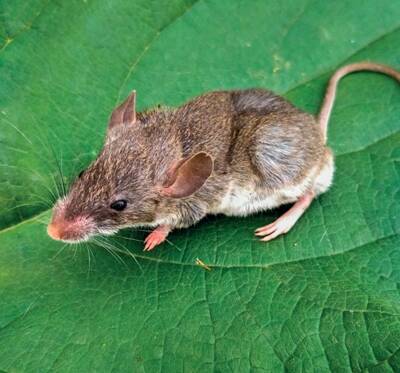Apodemus chevrieri
IUCN
LCBasic Information
Scientific classification
- name:Apodemus chevrieri
- Scientific Name:Apodemus chevrieri
- Outline:Rodents
- Family:Rodentia Muridae Apodemus
Vital signs
- length:39.34g
- Weight:100mm
- lifetime:
Feature
It has a slightly large body, small ears, ochre-brown back and outer sides of the limbs, grayish-white dorsal surface, and the ventral surface gradually turns from black-brown to white.
Distribution and Habitat
It is endemic to China and is only distributed in southern China, including Sichuan, Yunnan, Guizhou, Chongqing, Hubei, Gansu and southern Shaanxi.
Alpine field mice mostly live in agricultural areas at an altitude of 800-2000m, birch-fir coniferous and broad-leaved mixed forests and shrubs, and human houses in forest areas. They prefer dark and humid environments as their habitats.
Appearance
The individual is relatively large, and is the largest individual in the genus Apodemus. The body is short and fat. The average body length is over 100mm. The tail length is shorter than the body length, averaging about 94mm. The back of the body is grayish yellow or brownish yellow, and the ventral side is slightly lighter, with no obvious boundary between the dorsal and ventral fur colors. The ears are relatively short, generally about 16mm. On the teeth, there are only two tooth processes on the lingual side of the third upper molar, a feature that is consistent with the black-striped Apodemus and different from other Apodemus. Based on this feature, some people divide the genus Apodemus into the subgenus Apodemus (
Details
The Alpine Apodemus belongs to the Murinae subfamily. The taxonomic status of this species is also controversial. In the past, some scientists regarded it as a subspecies of the black-lined Apodemus (<Apodemus agrarius>). There are also several synonyms. The Alpine Apodemus is the largest individual in the genus Apodemus. The distribution altitude is relatively low, generally not exceeding 1500m. In Yunnan, the distribution altitude can reach about 2500m. The population is large in low-altitude shrubs, and is also distributed in farmland and secondary grass.

The cave structure of the Alpine Field Mouse is more complex than that of the Black-lined Field Mouse. In addition to natural stone caves, they generally dig holes in the middle and lower parts of the earth ridges, and some of them build holes in the center of the field. The cave is mainly composed of nest chambers, open caves, dark caves and tunnels. The nest chamber is the place where the Alpine Field Mouse breeds and rests. It is often located in the middle and upper part of the earth ridge. There are usually 3 nests, which are often arranged in a straight line. Except for a few, only one nest chamber has a nest. Most of them are built in the middle nest chamber, and some are built in the left or right nest chamber.
In the farming area, the Alpine Field Mouse mainly feeds on food crops, especially rice, corn, peanuts, sweet potatoes, buckwheat, pumpkin, etc. In non-farming areas, it feeds on grass seeds, tree seeds and fruits. The Alpine Field Mouse occupies a favorable natural environment, and there is no shortage of food all year round. It likes to eat seed food and rarely eats the green part of plants.
The breeding season of Alpine Apodemus is from May to November, with 3-6 pups per litter. In Sichuan, China, this species can breed in all seasons, with the peak season from March to May.
Yang Zaixue et al. (2000) pointed out that there are significant differences in the reproductive capacity of Alpine Apodemus in different age groups, with the highest in the elderly group and the lowest in the sub-adult group. The reproductive index increases with the increase of population age. It can be seen that with the increase of population age, the reproductive capacity of female mice continues to increase. The breeding population of Alpine Apodemus is mainly the adult group and the elderly group.
In Guizhou, China, the age structure of the Alpine Field Mouse population is basically stable in each year, with the adult group occupying an absolute advantage, accounting for 26.67%~37.98% of the total number of mice, with an average of 32.02%, followed by the sub-adult group and the juvenile group, and the elderly group has the least individuals. It can be seen that the age structure of the Alpine Field Mouse population is a typical "pyramid" type. It is a relatively stable growing population in the region.
Listed in the 2008 Red List of Endangered Species of the World Conservation Union (IUCN) ver 3.1-Least Concern (LC).








